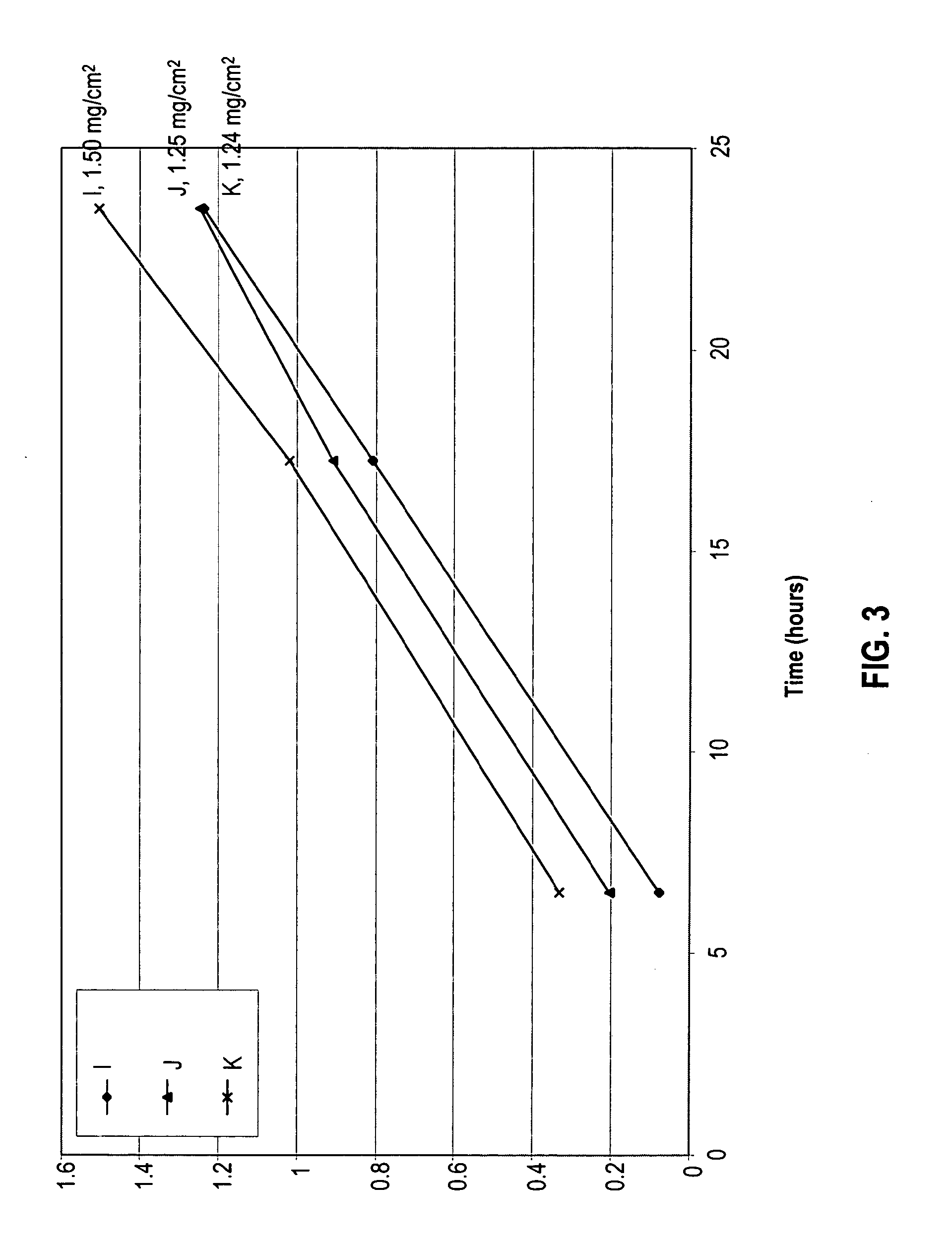Transdermal administration of hydrophilic drugs using permeation enhancer composition
a technology of enhancer and hydrophilic drug, applied in the field of transdermal administration of hydrophilic drug, can solve the problems of skin irritation and sensitization, and achieve the effect of increasing the rate of permeation of transdermally administered hydrophilic drug, without resulting in skin damage or systemic toxicity, and increasing the effect of permeation
- Summary
- Abstract
- Description
- Claims
- Application Information
AI Technical Summary
Benefits of technology
Problems solved by technology
Method used
Image
Examples
example 1
[0082]An in vitro skin permeation study was conducted using four solutions of meloxicam each containing sodium hydroxide and a nitrogenous base. The components used to prepare each formulation are listed in Table 1, along with the actual weight of each component and the weight percent in each formulation. Each component was added in the order listed in Table 1. The solution was placed directly on human cadaver skin as described below.
[0083]The in vitro permeation of meloxicam from formulations A, B, C, and D was evaluated using a Franz-type diffusion cells with a diffusion area of 1 cm2. The volume of the receiver solution was 8 ml. Human cadaver skin was cut to a proper size and placed upon the receiver chamber of the diffusion cell with the stratum corneum facing up. The donor chamber was placed atop the stratum corneum, and the cell was clamped together. 50 μl of each meloxicam formulation was added to the stratum corneum clamped between the donor and receiver chambers of the cel...
example 2
[0085]An in vitro skin permeation study was conducted using four diclofenac sodium transdermal delivery systems. The components used to prepare each system are listed in Table 2, along with the actual weight of each component and the weight percent (based on total solution weight) in each formulation. Each formulation was coated on a release liner and dried in an oven at 65° C. for two hours to remove water and other solvents. The dried drug-in-adhesive / release liner film was laminated to a backing film, and the backing / drug-in-adhesive / release liner laminate was then cut into discs with a diameter of 9 / 16 inch. The theoretical weight percent weight of each component of the system, after drying (calculated assuming all volatile ingredients were completely removed during drying), is set forth in Table 3.
[0086]The in vitro permeation of diclofenac sodium through human cadaver skin from these discs was evaluated using Franz diffusion cells with a diffusion area of 1 cm2 and a receiver ...
example 3
[0088]An in vitro skin permeation study was conducted as in Example 1, using three solutions of alendronate sodium each containing sodium hydroxide and a nitrogenous base. The components used to prepare each formulation are listed in Table 4, along with the actual weight of each component and the weight percent in each formulation. Each component was added in the order listed in Table 4. The solution was placed directly on human cadaver skin as described below.
[0089]The in vitro permeation of alendronate from formulations I, J, and K was evaluated using a Franz-type diffusion cells with a diffusion area of 1 cm2. The volume of the receiver solution was 8 ml. Human cadaver skin was cut to a proper size and placed upon the receiver chamber of the diffusion cell with the stratum corneum facing up. The donor chamber was placed atop the stratum corneum, and the cell was clamped together. 50 μl of each alendronate sodium solution was added to the stratum corneum clamped between the donor ...
PUM
| Property | Measurement | Unit |
|---|---|---|
| apparent aqueous solubility | aaaaa | aaaaa |
| apparent aqueous solubility | aaaaa | aaaaa |
| thick | aaaaa | aaaaa |
Abstract
Description
Claims
Application Information
 Login to View More
Login to View More - R&D
- Intellectual Property
- Life Sciences
- Materials
- Tech Scout
- Unparalleled Data Quality
- Higher Quality Content
- 60% Fewer Hallucinations
Browse by: Latest US Patents, China's latest patents, Technical Efficacy Thesaurus, Application Domain, Technology Topic, Popular Technical Reports.
© 2025 PatSnap. All rights reserved.Legal|Privacy policy|Modern Slavery Act Transparency Statement|Sitemap|About US| Contact US: help@patsnap.com



